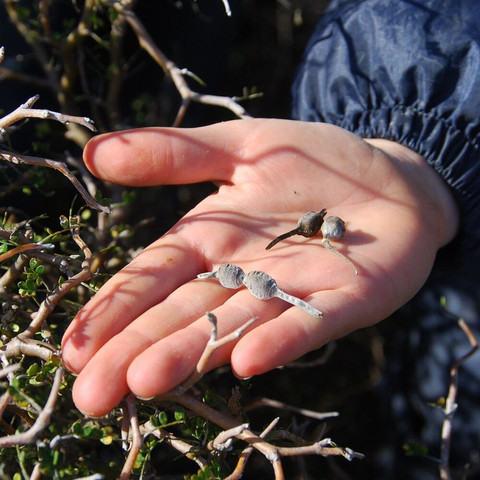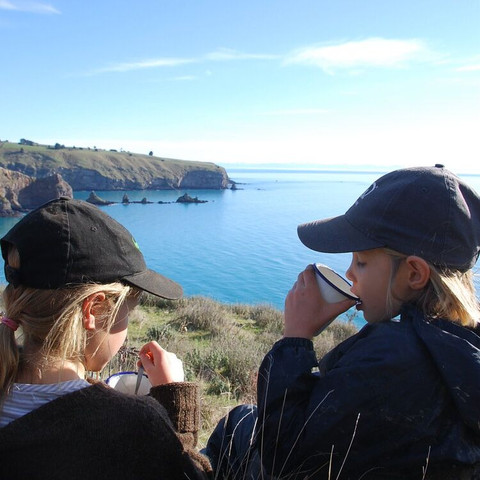Restoring native Kowhai trees at family farm, Ridgecliff, Banks Peninsula
- ZQ Natural Fibre

- Sep 30, 2020
- 3 min read

Imagine going to work with uninterrupted views of the Pacific Ocean, scanning your eyes across New Zealand's farming patchwork of the North Canterbury region, along the coastline and seeing as far up the country as Kaikoura (on a clear day).
The ZQ certified farm of Ridgecliff is well named, settled on the coast of Banks Peninsular. It's beautiful, natural and remote - which also means a quick trip to the shop for milk isn't an option...!
Run by the Craw family, they believe in dreaming big, working hard and to always keep learning.
Hamish and Annabel Craw are 6th generation farmers and, along with their three children, own and operate the 420 hectare property (that's 79 hectares bigger than Central Park in New York City...)
From native forest summits and bush gullies, to steep coastal cliffs and sandy beaches, Ridgecliff offers a varied landscape for their flock of 1500 crossbreed sheep and 150 cows to graze freely.
Part of their drive for continuous progress, the Craw family are constantly evolving their farming practice, moving and adapting as new technologies or approaches develop. They hold a strong belief that profitable and productive farming can exist alongside biodiversity conservation and restoration of the land.

Part of this work is protecting and growing indigenous vegetation, which means substantial native tree planting and working with nature's ability to regenerate.
To grow the trees that will become the future forests of Ridgecliff, seeds are collected from the existing indigenous vegetation on the property. That way the plants and trees will be already suited to local conditions and more likely to survive.
Seed collecting has become a favourite pastime for the Craw family and they often feel like they have discovered hidden treasure when stumbling upon a tree or shrub laden with seed.
A recent exploration was to collect Sophora prostrata (commonly known as kowhai, prostrate kowhai or dwarf kowhai). This variety of kowhai exists on several rocky outcrops around ‘Big Hill’, an 18 hectare block which the Craws are retiring from grazing and restoring back to indigenous bush.
Restoration involves increasing the population of this and other kowhai within Big Hill, along with other native trees and shrubs. To ensure suitable trees are ready to plant in 2 - 3 years (once the nursery crop of kanuka is well established and providing shelter and protection), propagators require sufficient quantities of seed.

Exploring for Kowhai seed can often turn into a full day's adventure for George (6), Charlotte (8) and Harriet (10) including searching among zig-zaggy branches, examining little leaves, navigating dense shrubs, observing nearby rock pools, and stopping for a well-deserved hot chocolate!
Special notes about Kowhai:
Prostrate Kowhai is endemic to the eastern South Island (Marlborough to the Waitaki Valley) and most commonly found on Banks Peninsula. Being endemic means it is unique or confined to these regions and not found naturally anywhere else. A unique characteristic of kowhai is that it's a legume and fixes nitrogen through the nodules on its roots, and is New Zealand’s only native deciduous tree.
Because kowhai has a very hard external shell around the seed it's difficult for moisture to access the seed for germination. Prior to sowing the seed the coating needs to be cut, cracked or sanded down. It's common to see kowhai growing along rocky waterways, as the seed shell has been worn away as it tumbles over boulders and rocks, then washed up on the moist banks of the waterway providing an ideal environment for germination.
We think Ridgecliff itself is a pretty ideal environment, and look forward to watching the kowhai trees flourish.
Special thanks to Annabel Craw and family.
To learn more about Ridgecliff or their farm's accommodation, check out their website and Instagram.











